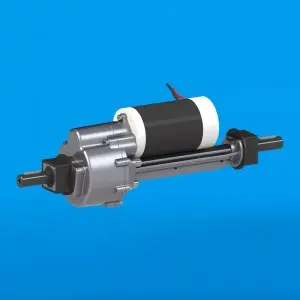The Toyota Prius is known for its fuel efficiency and environmentally friendly design, but like any vehicle, it requires regular maintenance to ensure optimal performance. A key component of the Prius is the transaxle, which combines the functions of the transmission and axle. Knowing when to change your transaxle oil is critical to maintaining the longevity and efficiency of your Prius. In this article, we’ll explore the importance of transaxle oil, signs that it may need to be replaced, and guidance on when to perform maintenance.
Understand the transaxle
Before we dive into fluid changes, it’s necessary to understand what a transaxle is and its role in your Prius. The transaxle is a complex assembly that integrates the transmission and differential into a single unit. In hybrid cars like the Prius, the transaxle also manages power distribution to the electric motors, making it an important part of performance and efficiency.
Transaxle oil has many uses:
- Lubrication: Reduce friction between moving parts and prevent wear.
- Cooling: Helps dissipate the heat generated during operation and maintain the optimal temperature.
- Hydraulic Function: Allows the transmission to operate smoothly by providing the necessary hydraulic pressure.
The Importance of Transaxle Oil Maintenance
Maintaining the correct level and quality of transaxle fluid is critical for several reasons:
- PERFORMANCE: Old or contaminated fluid can cause sluggish performance, affecting acceleration and fuel efficiency.
- Longevity: Regular fluid changes can extend the life of your transaxle, saving you costly repairs or replacements.
- SAFETY: A well-maintained transaxle keeps your vehicle running smoothly, reducing the risk of unexpected breakdowns while driving.
When to Change Prius Transaxle Fluid
Manufacturer recommendation
Toyota provides specific guidance on when to change your Prius transaxle oil. Generally speaking, it is recommended that the transaxle oil be changed every 60,000 to 100,000 miles, depending on driving conditions and usage. However, it’s best to consult your owner’s manual for the most accurate information for your specific model year.
Signs that it’s time for a change
While it’s crucial to follow the manufacturer’s recommendations, there are several signs that may indicate you need to change your Prius transaxle oil sooner than expected:
- Unusual Noises: If you hear a grinding, whining, or dinging sound when changing gears, it could be a sign that the fluid is low or contaminated.
- Delayed Engagement: If there is a noticeable delay when shifting from Park to Drive or Reverse, it may be a sign that the fluid is not providing sufficient hydraulic pressure.
- Overheating: If the transaxle is running hotter than usual, it may be due to fluid degradation that no longer effectively dissipates heat.
- Fluid Color and Odor: Healthy transaxle fluid is usually bright red and has a slightly sweet smell. If the fluid is dark brown or has a burning smell, it needs to be replaced.
- Fluid Leak: A red puddle of fluid underneath your vehicle may indicate a leak, which may cause the fluid level to be low and require replacement.
Driving Conditions
Your driving habits and conditions can also affect how often you need to change your transaxle fluid. If you frequently drive in stop-and-go traffic, tow heavy loads, or operate in extreme temperatures, you may need to change your fluid more frequently than standard recommendations.
How to Change Prius Transaxle Oil
If you’re used to DIY maintenance, changing the transaxle oil in your Prius can be a simple process. However, if you’re unsure, it’s best to consult a professional mechanic. For those who want to tackle this job themselves, here’s a step-by-step guide:
Required Tools and Materials
- New transaxle oil (see owner’s manual for correct type)
- Fluid pump
- Set of socket wrenches
- a drip tray
- a funnel
- Safety gloves and goggles
Step by step process
- Preparing the Vehicle: Park your Prius on level ground and engage the parking brake. If the vehicle is already running, allow it to cool.
- Locate the drain plug: Under the vehicle, locate the transaxle drain plug. It’s usually located on the bottom of the transaxle.
- Drain old fluid: Place the drain pan under the drain plug and use a socket wrench to remove the plug. Let the old liquid drain completely into the pot.
- Replace the drain plug: After the fluid is drained, replace the drain plug and tighten it.
- Add New Fluid: Locate the fill plug, which is usually located on the side of the transaxle. Add new transaxle fluid using a funnel and fluid pump until the recommended level is reached.
- CHECK FOR LEAKS: Start the vehicle and let it run for a few minutes. Check for leaks around the drain and fill plugs.
- Dispose of Old Fluid: Properly dispose of old transaxle fluid at a recycling center or an auto parts store that accepts used oil.
in conclusion
Changing the transaxle oil in your Toyota Prius is an important part of vehicle maintenance and can significantly impact performance, longevity, and safety. By following the manufacturer’s recommendations and understanding the signs that indicate a fluid change is needed, you can keep your Prius running smoothly for years to come. Whether you choose to perform maintenance yourself or seek professional help, being proactive about changing your transaxle fluid will ensure that your hybrid vehicle continues to deliver the efficiency and reliability it is known for.
Post time: Oct-21-2024


